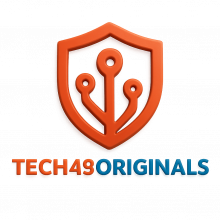
There are 1 Companies in Namibia
that provide Flutter Development Services!
Namibia's tech sector is mainly occupied by Chinese companies that outsource for homeland projects, data, and resources. Right now, the country is focusing on green electricity and more internet coverage, which are two pillars that may cause new IT companies to emerge by 2025.
Discover Top IT Companies in Namibia specialized in Flutter and other related services. Find the best IT service providers for your projects.
Flutter is an open-source UI (User Interface) framework developed by Google for building natively compiled applications for mobile, web, and desktop from a single codebase.
It was officially introduced by Google in May 2017, although its development began earlier as an internal project named "Sky." It aimed to address challenges in cross-platform mobile app development by providing a consistent and high-performance framework for building native-like apps on iOS, Android, and other platforms. Flutter has since gained significant traction and popularity in the developer community.
Handpicked companies • No obligation to hire • 100% risk-free
Explore Top Flutter Development Companies in Namibia
Tech49Originals is a Namibian technology company offering scalable solutions in cybersecurity, software development, web development, and IT hardware.
Filter Flutter Development Companies in Namibia by Cities
Find the right tech company near you or from a specific city. Some of the best companies might be located in smaller cities.
Find more Flutter Development companies around the world
TechBehemoths is the world's most advanced and user-friendly platform to match IT Companies with real clients without hustle.
The IT Industry in Namibia: General Portrait
The IT Industry in Namibia: General Portrait
Along the southwest African coast, the Namibian desert covers the country with the same name and places it into a position where tech or IT would have never emerged. But with Chinese investments and national will to face the digital era, Namibia aims towards the most distant goal humanity has in 2021 - space. On June 8, 2021, the Namibian government released the first-ever space, science, and tech policy to empower social and economic changes in the country, available for 2021-2030.
Why You Should Work With Namibia's IT Companies
There is probably no logical reason why somewhere from the northern hemisphere would work with an IT company from Namibia. But, the reality shows that the country's potential in the Information and Technology sector is still undervalued, and investments should be made to reveal the country's real capacities. The country has a little over 2.82M people, which speaks of a low population density. Despite this, Namibia's literacy is one of the highest in Africa: 91.5%, and combined with its geographical location, it could become one of the region's leading tech centres.
What You Should Pay Attention to When Working With Namibian IT Companies
Namibia is a great safari destination, but so far, that's probably one of the few reasons why you would visit this country. Even though with high human potential, Namibia's IT infrastructure does not give any hope of fast rehabilitation any time soon. Businesses tempted to work with a Namibian tech company don't have too many choices since there are probably no experienced or talented professionals to face an international project that would bring lots of benefits.
How Reliable Are Namibian IT Companies
The country's tech sector is mainly occupied by Chinese companies that outsource for homeland projects, data, and resources. Due to the lack of sustainability, the ICT sector in Namibia is underdeveloped and cannot be rated as reliable or unreliable. Until further development, the country is still a mystery for the majority of the business world.
How Does the Namibian IT Industry Relate to the Neighboring Countries?
The only and most advanced competitor Namibia has, and should take as a developing model in South Africa. Its proximity will eventually allow the country's modernization and connection to a wider ICT diversification. Angola or Botswana have little experience and will to develop ICT in the region, and are also not eager to share the little experience they have with neighboring countries. In 2021, we witnessed a diverse but also divided Africa that had other priorities and issues than tech industry development and cooperation in this field, but in 2025, it is investing in ICT, digital policies, and tech innovation.
ICT in Namibia in 2025 - Perspectives and Challenges
As the electricity penetration rate in Namibia increases, 2022 came with the first development chance for the ICT sector in Namibia. Focus on green electricity and more internet coverage for Namibia are two pillars that may cause new IT companies to emerge earliest by 2025. Meanwhile, the country focuses on other challenges, such as access to water, poverty reduction, and better living conditions.
What is Flutter and what are its benefits for your projects?
Flutter is an open-source UI (User Interface) framework developed by Google for building natively compiled applications for mobile, web, and desktop from a single codebase.
It was officially introduced by Google in May 2017, although its development began earlier as an internal project named "Sky." It aimed to address challenges in cross-platform mobile app development by providing a consistent and high-performance framework for building native-like apps on iOS, Android, and other platforms. Flutter has since gained significant traction and popularity in the developer community.
Flutter has seen rapid adoption, thanks to its key advantages, such as a single codebase for multiple platforms, a rich set of pre-designed widgets, and fast development cycles. It has found use in various industries, including mobile app development, web development, desktop applications, and even embedded systems. Some notable apps developed with Flutter include Alibaba, Google Ads, eBay Motors, and more. Its usage continues to grow, and it has a strong developer community and ecosystem.
Flutter is versatile and suitable for a wide range of projects:
- Mobile Apps: Flutter is commonly used for developing mobile applications, including consumer apps, business apps, e-commerce apps, social media platforms, and more. It provides a native-like experience on both Android and iOS.
- Web Apps: Flutter can be used to build web applications, allowing developers to target browsers as well. This is still in the experimental phase (as of my knowledge cutoff date), but it shows promise for building responsive web interfaces.
- Desktop Applications: Flutter supports desktop platforms like Windows, macOS, and Linux. Developers can create desktop applications for various purposes, including productivity tools and utilities.
- Embedded Systems: Flutter can be used to create user interfaces for embedded systems and IoT (Internet of Things) devices, providing a consistent look and feel across different hardware.
- Custom UI Components: Flutter is often used to build custom UI components and widgets that can be integrated into larger applications, providing a cohesive design language.
Hourly rates for Flutter developers can vary significantly based on factors like location, experience, project complexity, and demand. On average, Flutter developers may charge anywhere from $25 to $150 or more per hour. Rates tend to be higher in regions with a higher cost of living, such as North America and Western Europe, and lower in regions with lower living costs, such as Asia and Eastern Europe.
It's important to note that more experienced and specialized Flutter developers with a strong track record may charge higher rates. Additionally, some developers or development agencies may offer fixed-price contracts for specific Flutter projects, which can vary widely based on the project's scope and requirements.
When hiring Flutter developers, it's essential to consider factors like their expertise, portfolio, and the complexity of your project. Getting multiple quotes and conducting interviews can help you determine a reasonable rate and find the right developer or team for your specific needs.
We have also written an extensive research of what skills you should be looking for when hiring Flutter developers.
